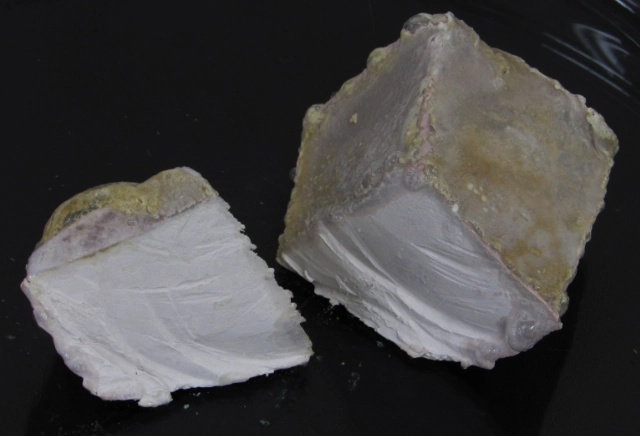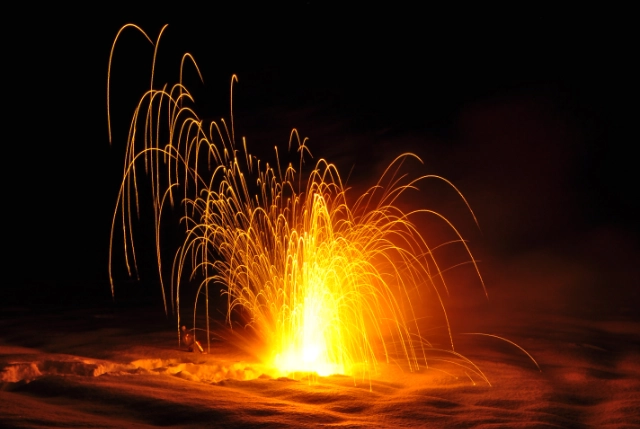Group 1 (the alkali metals)

Aims of this page
After studying this page, you should be able to:
- recall physical properties of the alkali metals
- describe the reactions of lithium, sodium and potassium with water
- describe and explain the pattern in reactivity of lithium, sodium and potassium
- predict the reactivity of other alkali metals.
Overview
The group 1 elements are placed on the left of the periodic table. They are called the alkali metals because they are metals, and their oxides and hydroxides form alkaline solutions.
In general, the alkali metals:
- are soft, and easily cut with a knife
- have relatively low melting points compared to other metals.
You need to know details about the first three alkali metals (lithium, sodium and potassium). Rubidium, caesium and francium are the other alkali metals.
Sir Humphry Davy was the first person to isolate sodium and potassium. He used the electrolysis of molten sodium hydroxide and potassium hydroxide to do this in 1807.
William Brande used the same process to isolate lithium in 1821, this time using molten lithium oxide.
Melting points
The graph shows the melting points of the alkali metals as you go down group 1.
When you click on the download symbol, you will be able to download the graph as an image file or pdf file, save its data, annotate it, and print it.
Melting points increase down group 1. If you did not know the melting point of one of the alkali metals, you could predict its approximate melting point from the graph.
The melting point of caesium is just 28.5 °C. It would melt on a hot day.
Worked example
Francium is placed at the bottom of group 1. Predict its melting point using the graph to help you. Explain your answer.
About 22 °C.
The graph shows that melting points decrease down the group, and the difference decreases from one element to the next. Francium is below caesium, so its melting point should be a bit less than 28.5 °C.
Francium is a very rare radioactive element. Its most common isotope, 223Fr, has a half-life of just two minutes. Only about 20 – 30 g is in the Earth’s crust at any one time. No-one has been able to collect enough of the metal to measure its actual melting point.
Reactivity
Reactions in air
The alkali metals react with oxygen in the air to form metal oxides. For example, sodium reacts with oxygen to form sodium oxide:
4Na(s) + O2(g) → 2Na2O(s)
You can see this happening when a piece of sodium is cut with a knife. The cut surface is silvery and shiny (as you would expect for a metal), but it rapidly becomes dull grey as sodium oxide forms.
The rate at which this happens to the alkali metals increases as you go down group 1.

Reactions with water
The alkali metals react with cold water to form soluble metal hydroxides. For example, sodium reacts with water to form aqueous sodium hydroxide and hydrogen gas:
2Na(s) + 2H2O(l) → 2NaOH(aq) + H2(g)
The reactions of lithium, sodium and potassium have features in common:
- all three metals are less dense than water, so they float
- pieces of metal get smaller as the reaction carries on
- bubbles are given off
- their hydroxides dissolve in the water to produce alkaline solutions – these turn universal indicator solution purple.
The equation is interesting because it contains all four state symbols:
- (s) = solid
- (l) = liquid
- (g) = gas
- (aq) = aqueous solution
The reactions become more vigorous and rapid as you go down the group. The table describes the main differences. The video at the bottom of the page shows sodium and potassium reacting with water.
| Lithium | Sodium | Potassium |
|---|---|---|
| Steady bubbling Flame not seen | Rapid bubbling Metal melts and forms a silvery ball Yellow flame may be seen Sparks seen | Very rapid bubbling Metal melts and forms a glowing ball Lilac flame seen Sparks seen Explosion at the end |

Why does reactivity increase?
The atoms of each group 1 element have one outer electron (one electron in the highest occupied energy level). They lose this electron in reactions. In general:
M → M+ + e–
Dot and cross diagrams to show the electronic configurations of lithium, sodium and potassium.
As you go down group 1:
- there are more occupied shells (energy levels)
- the force of attraction between the nucleus and outer electron decreases
- the outer electron is lost more easily.
The more easily the outer electron is lost , the more reactive the element is.
Lithium, sodium and potassium are stored in oil. This is to stop air and water reaching them, which would cause reactions like the ones described on this page.

